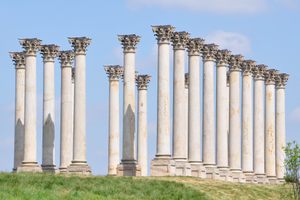About
As the nation’s capital, Washington, D.C. is filled with monuments to peace and the people who made that peace possible—some more famous than others. On L Street near Pennsylvania Avenue NW, for instance, is an overlooked monument to one of the most important peace treaties in America's history, the Rush-Bagot Agreement of 1817.
After the War of 1812, tensions between the U.S. and Britain were still high. One area of tension, and a cause of the war, was the militarization of the Great Lakes. U.S. Minister and future president John Quincy Adams had proposed the idea of disarmament of the Great Lakes while he was in Britain, to which the British government responded favorably. It even sent a diplomat, Sir Charles Bagot, over to the United States to help reduce tensions with the fledgling nation.
Bagot initially met with Secretary of State James Monroe and later with his successor, Benjamin Rush (a signer of the Declaration of Independence). Together, they crafted an agreement that limited each nation to one or two ships per lake for military navigation only (i.e. map-making and surveying, and not for defense). While this treaty did little to settle the continuing border disputes with British Canada over the years, it set the foundation for what has become the longest peaceful border in the world.
The D.C. monument to the Rush-Bagot Agreement was placed in 1935 by Kiwanis International in front of the Columbia Hospital for Women, on the former site of the British Legation at the time. Other monuments and plaques exist in Kingston, Ontario, and at Fort Niagara.
Related Tags
Know Before You Go
The monument is located at 2425 L St NW, a few blocks from the Foggy Bottom Metro.
Community Contributors
Added By
Published
September 2, 2019































